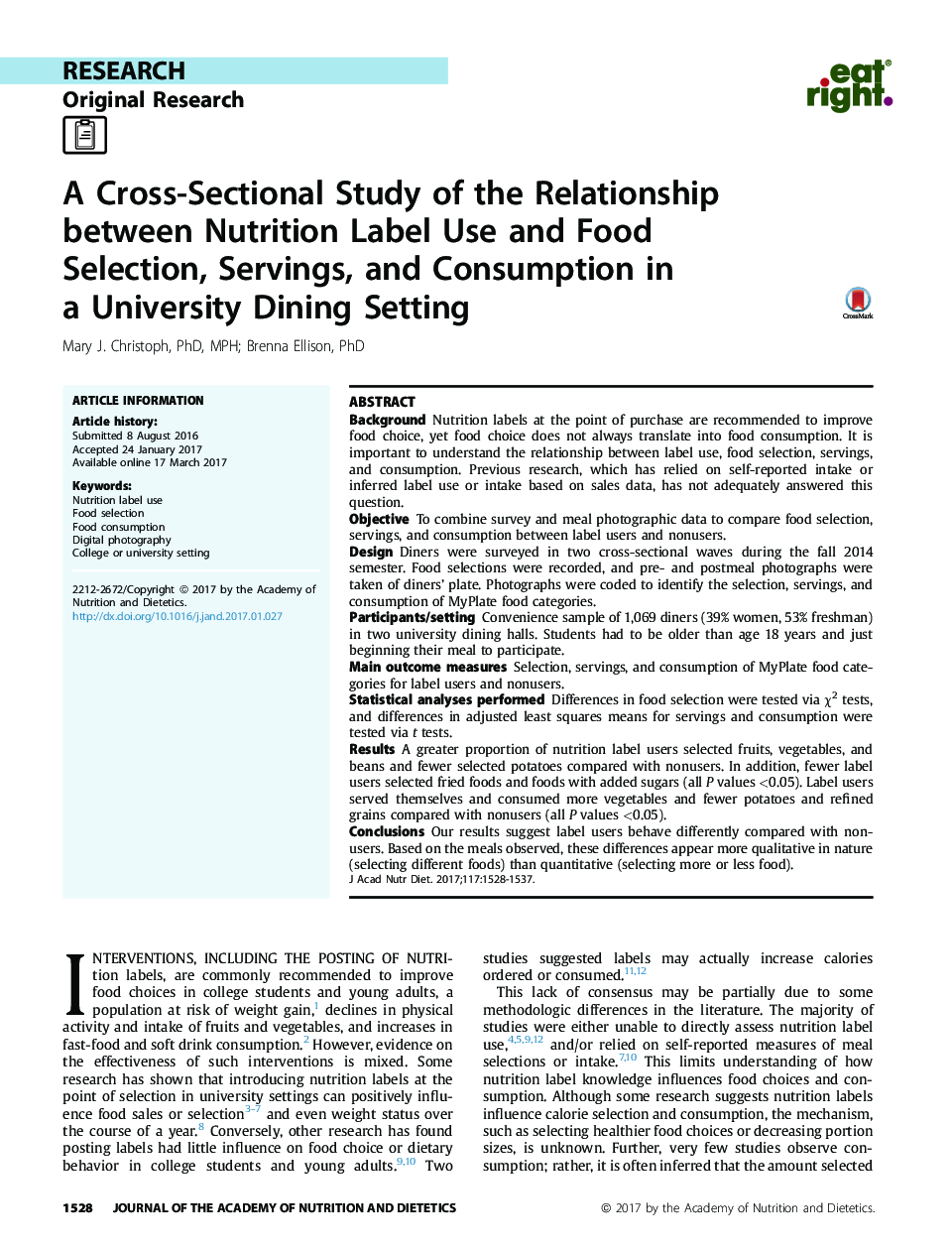| Article ID | Journal | Published Year | Pages | File Type |
|---|---|---|---|---|
| 5568482 | Journal of the Academy of Nutrition and Dietetics | 2017 | 10 Pages |
BackgroundNutrition labels at the point of purchase are recommended to improve food choice, yet food choice does not always translate into food consumption. It is important to understand the relationship between label use, food selection, servings, and consumption. Previous research, which has relied on self-reported intake or inferred label use or intake based on sales data, has not adequately answered this question.ObjectiveTo combine survey and meal photographic data to compare food selection, servings, and consumption between label users and nonusers.DesignDiners were surveyed in two cross-sectional waves during the fall 2014 semester. Food selections were recorded, and pre- and postmeal photographs were taken of diners' plate. Photographs were coded to identify the selection, servings, and consumption of MyPlate food categories.Participants/settingConvenience sample of 1,069 diners (39% women, 53% freshman) in two university dining halls. Students had to be older than age 18 years and just beginning their meal to participate.Main outcome measuresSelection, servings, and consumption of MyPlate food categories for label users and nonusers.Statistical analyses performedDifferences in food selection were tested via Ï2 tests, and differences in adjusted least squares means for servings and consumption were tested via t tests.ResultsA greater proportion of nutrition label users selected fruits, vegetables, and beans and fewer selected potatoes compared with nonusers. In addition, fewer label users selected fried foods and foods with added sugars (all P values <0.05). Label users served themselves and consumed more vegetables and fewer potatoes and refined grains compared with nonusers (all P values <0.05).ConclusionsOur results suggest label users behave differently compared with nonusers. Based on the meals observed, these differences appear more qualitative in nature (selecting different foods) than quantitative (selecting more or less food).
